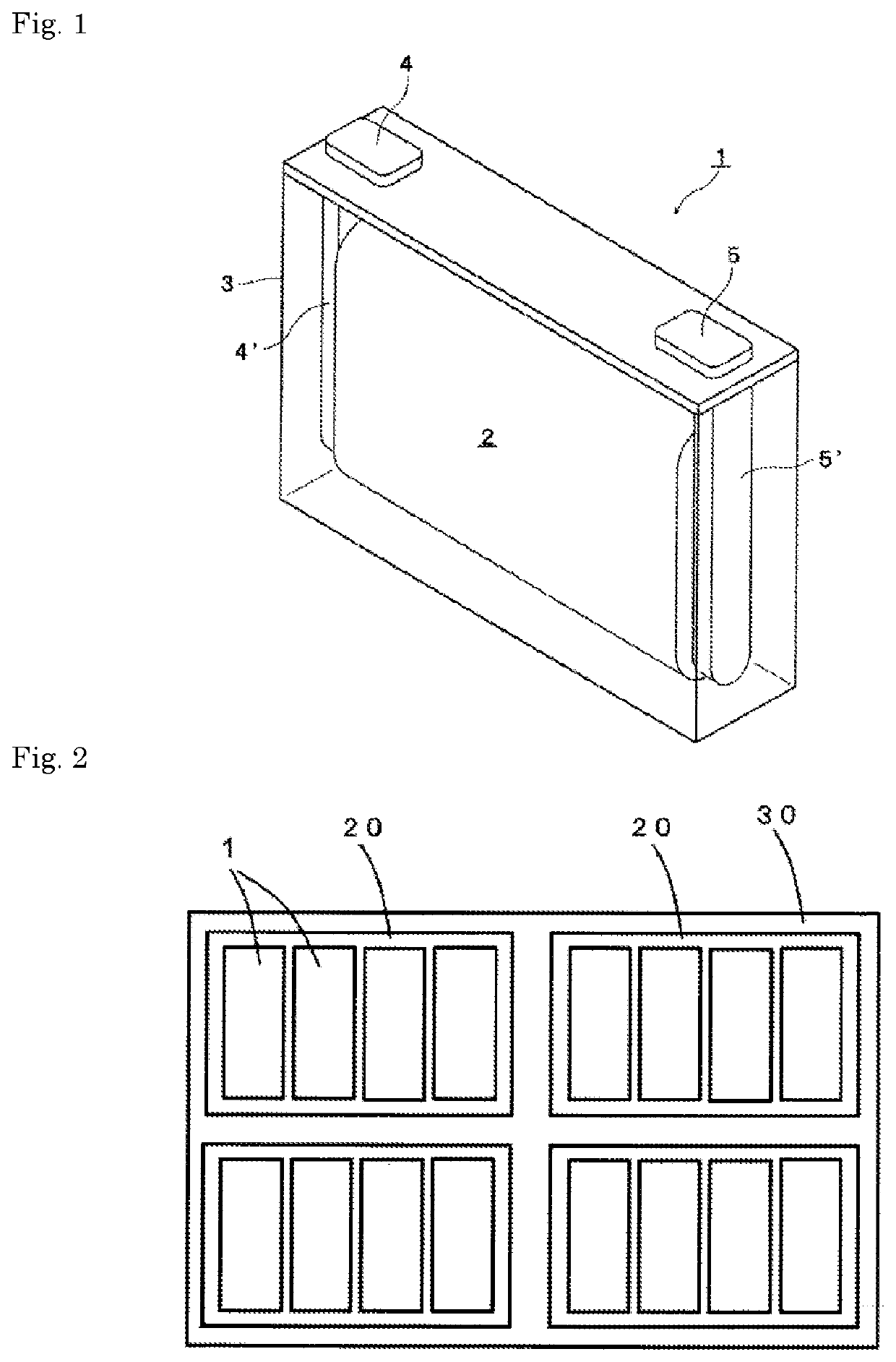Nonaqueous electrolyte energy storage device and method for manufacturing nonaqueous electrolyte energy storage device
a technology of nonaqueous electrolyte and energy storage device, which is applied in the direction of cell components, final product manufacturing, sustainable manufacturing/processing, etc., can solve the problems of deterioration of charge-discharge performance, and achieve the effect of greatly increasing the internal resistance after a charge-discharge cycl
- Summary
- Abstract
- Description
- Claims
- Application Information
AI Technical Summary
Benefits of technology
Problems solved by technology
Method used
Image
Examples
example 1
(Preparation of Nonaqueous Electrolyte)
[0099]Lithium bis(fluorosulfonyl)imide (LiFSI) that served as an electrolyte salt was dissolved at a concentration of 1.0 mol / kg in a mixed solvent prepared by mixing fluoroethylene carbonate (FEC) with methyl trifluoroethyl carbonate (MFEC) at a volume ratio of 3:7 to prepare a nonaqueous electrolyte.
(Manufacture of Nonaqueous Electrolyte Energy Storage Device)
[0100]The positive electrode P1 and the negative electrode were laminated on each other with a separator that was a polyolefin-made microporous film interposed therebetween to manufacture an electrode assembly. The electrode assembly was enclosed in a container made from a metal-resin composite film, then the nonaqueous electrolyte was injected into the inside of the container, and then an opening of the container was sealed by heat sealing to manufacture a nonaqueous electrolyte energy storage device (a laminated nonaqueous electrolyte secondary battery) of Example 1.
examples 2 to 6
, Comparative Examples 1 to 6, Reference Examples 1 to 2
[0101]Nonaqueous electrolyte energy storage devices of Examples 2 to 6, Comparative Examples 1 to 6 and Reference Examples 1 to 2 were manufactured in the same manner as in Example 1, except that the types of the positive electrodes and the electrolyte salts, the types of the solvents and the volume-based mixing ratios shown in Tables 1 to 3 were employed.
[0102]The solvents shown in the tables are the following compounds.
[0103]FEC: fluoroethylene carbonate
[0104]MFEC: methyl trifluoroethyl carbonate
[0105]TFEE: 1,1,2,2-tetrafluoroethyl-2,2,2-trifluoroethyl ether
[0106]EMC: ethyl methyl carbonate
[0107]EC: ethylene carbonate
[Evaluation 1] Range of Charge-Discharge Voltage: 4.6 to 2.0 V
(Initial Charge-Discharge)
[0108]Each of the nonaqueous electrolyte energy storage devices of Examples 1 to 4, Comparative Examples 1 to 4 and Reference Examples 1 to 2 was subjected to initial charge-discharge under the following conditions. Each of th...
PUM
| Property | Measurement | Unit |
|---|---|---|
| positive electrode potential | aaaaa | aaaaa |
| size | aaaaa | aaaaa |
| binding energies | aaaaa | aaaaa |
Abstract
Description
Claims
Application Information
 Login to View More
Login to View More - R&D
- Intellectual Property
- Life Sciences
- Materials
- Tech Scout
- Unparalleled Data Quality
- Higher Quality Content
- 60% Fewer Hallucinations
Browse by: Latest US Patents, China's latest patents, Technical Efficacy Thesaurus, Application Domain, Technology Topic, Popular Technical Reports.
© 2025 PatSnap. All rights reserved.Legal|Privacy policy|Modern Slavery Act Transparency Statement|Sitemap|About US| Contact US: help@patsnap.com

